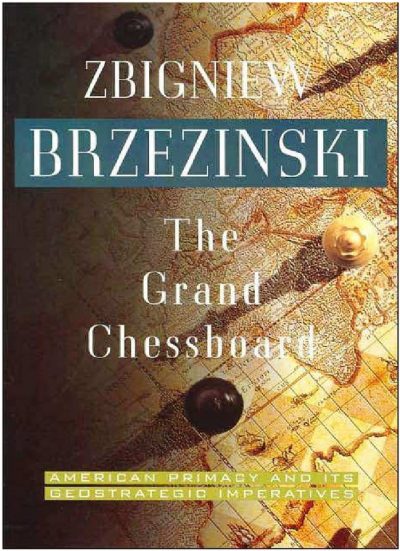Zbigniew Brzezinski (1997), The Grand Chessboard American Primacy and Its Geostrategic Imperatives, New York: Basic Books
Mibin Mathew Mammen
 The Grand Chessboard by Zbigniew Brzezinski is a book that looks in detail into the Eurasian Foreign Policy and how it can be of effect to the future American foreign Policymakers. The book provides a detailed understanding of power shifts in Eurasia with the reference to the emergence of Russia and China, who are the global power. The book looks in detail every region of the Eurasian Continent and the policies that the United States need to attempt to control the emergence of some of the powers in the region
The Grand Chessboard by Zbigniew Brzezinski is a book that looks in detail into the Eurasian Foreign Policy and how it can be of effect to the future American foreign Policymakers. The book provides a detailed understanding of power shifts in Eurasia with the reference to the emergence of Russia and China, who are the global power. The book looks in detail every region of the Eurasian Continent and the policies that the United States need to attempt to control the emergence of some of the powers in the region
The book is divided into seven main chapters which look at each region in the Eurasian Continent with the inclusion of Japan, India, and other countries which was neglected by many scholars as being an emerging power. The first chapter gives an idea of the development of the United States of America as a superpower of the globe with the definition of ‘Hegemony’ being the starting part of the chapter. This chapter can be considered as the preface to the understanding of the American Foreign Policy with references concerning the Monroe Doctrine and the idea of this doctrine being the remover of the American Isolationist sentiment that existed before this era. It also discusses what type of strategy the US need to adopt to be a different power with the ideas being reiterated of the Roman legion and the Mongol emperors in China and how they adopted different strategies to be a Global Superpower. The second chapter looks at the importance of Eurasia by looking at the history of the Eurasian countries and how the Eurasian countries can be a valuable asset to the United States of America. It also discusses the geopolitical aspects of Eurasian region such as Lisbon to Vladivostok which has been illustrated with maps and statistics of the resources that surround the region. It also defines how the American Foreign Policy needs to align itself to the region. The other chapters explore the relations of different countries with the US. For instance, the third chapter examines the US’s relations with Britain and France which is considered as its natural allies. Similarly, it also explains how the US exerts its influence in Europe with the support of Western Europe. The concluding chapter explains how the Eurasian region should grow its influence in the region.
The book looks at Eurasia through the American lens so it has one-sided approach. However, it predicts the emergence of China. It also reflects the pattern and the historical changes in a very compartmentalized manner by categorizing each part of the region into pieces like a chessboard. Though the book can be considered as an important canon to look at the world affairs and the geopolitics, it fails to address number of issues. It also does not define the idea of a geopolitical pivot and is not very clear on how Russia and China can pose a threat to the US Foreign Policy. Moreover, it looks at the world from the realist point of view, who believes in conquest and economic dominance to be a hegemonic strength.
In spite of that, the book can be very useful for those who are interested in understanding the Eurasian Policy from a Western point of view. It can be considered as a precursor to the researchers who wants to understand the importance of China and Russia.
